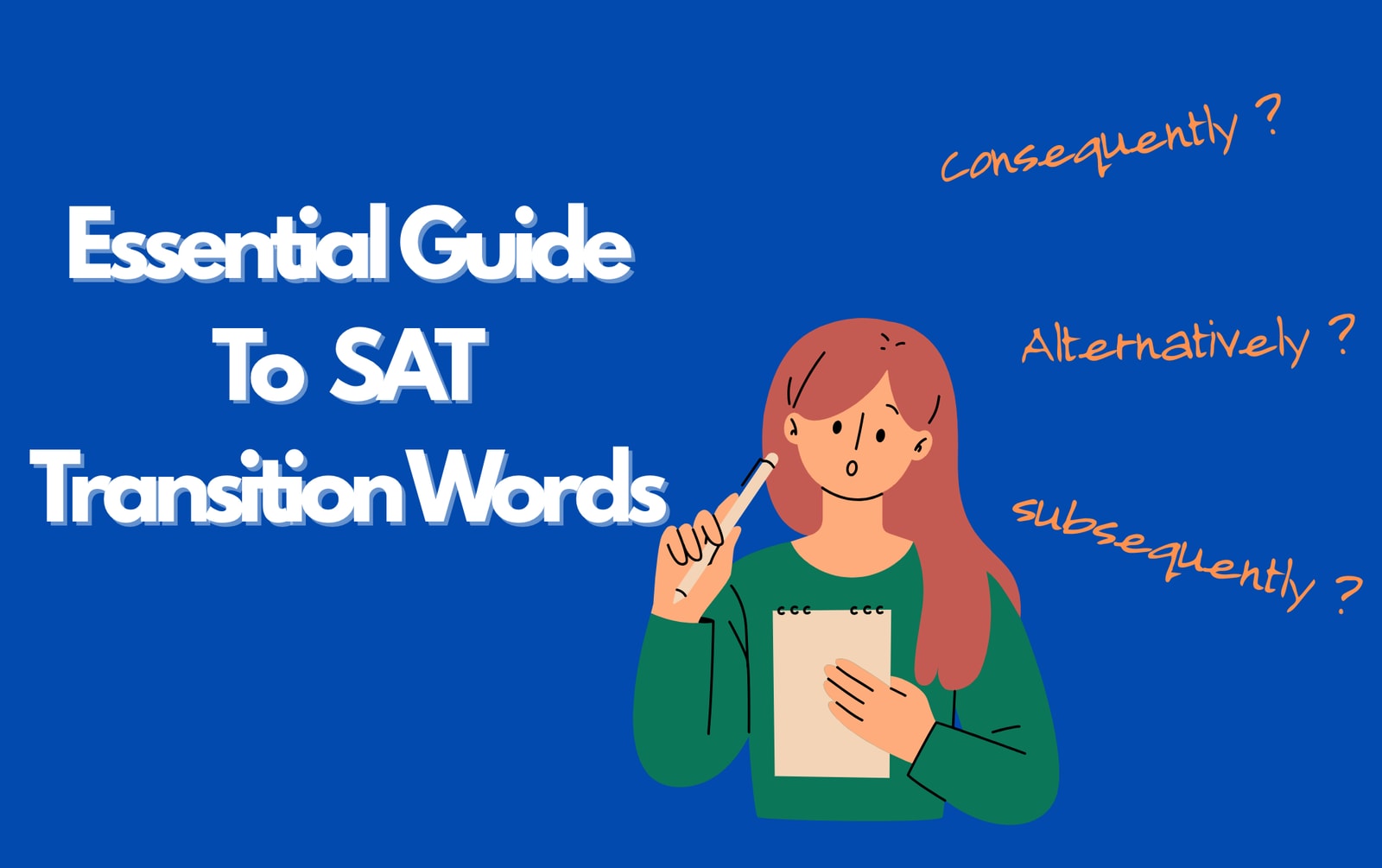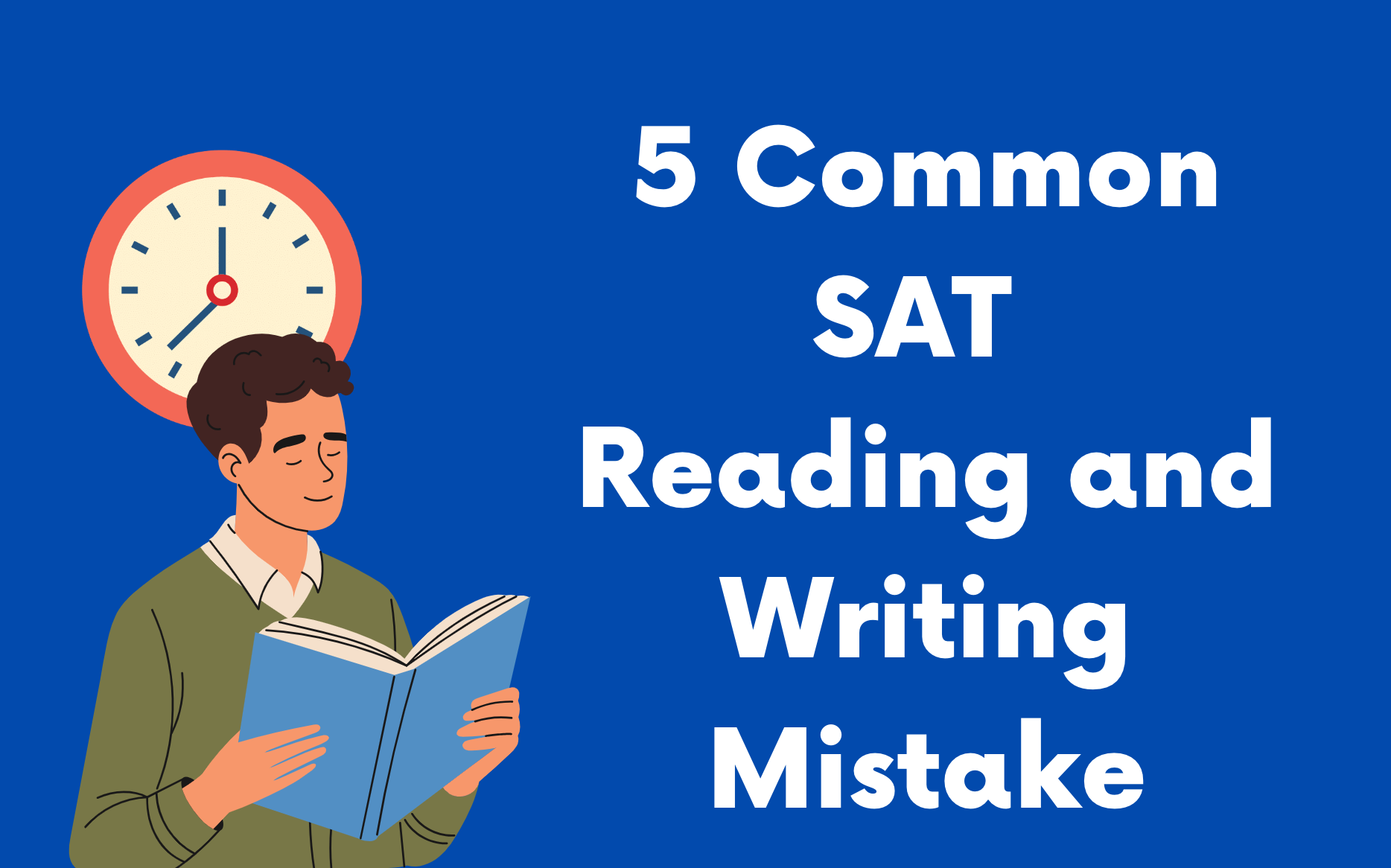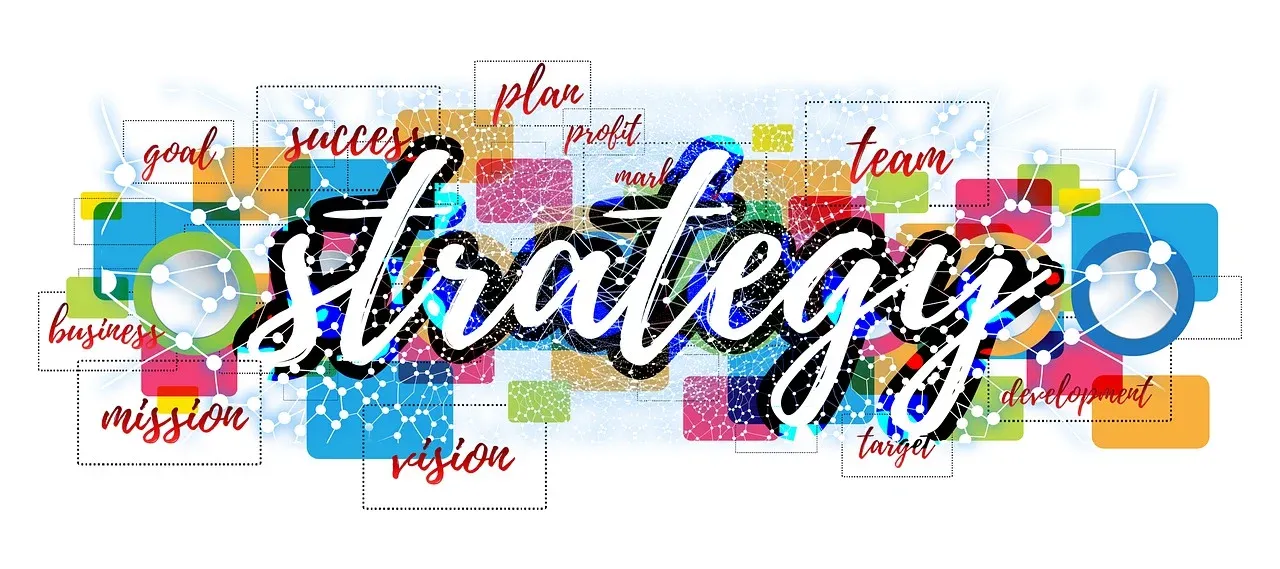SAT Transition Words Explained: Categories, Examples, and Smart Practice
Author
Phoenix Wilder
Date Published

The Digital SAT has a hidden twist: it’s not really about obscure vocabulary—it’s about logic. Nowhere is this more obvious than in the “Transition Words” questions, which test your ability to connect ideas precisely. These aren’t questions about whether you know fancy words; they are questions about whether you can identify the correct relationship between two statements—are they similar, opposite, cause-and-effect, or examples?
For over a decade, tutors have noticed that students often struggle with these items because they rely on intuition or “what sounds right.” That guesswork approach doesn’t hold up on test day. The truth is, there are only a few core logical relationships that the SAT tests. If you train yourself to identify the relationship first, then choosing the correct transition word becomes much clearer.
This guide categorizes SAT transition words by function, provides common signal clues, and shows how to approach these questions strategically. But most importantly, we’ll also show you how the Best SAT Score platform integrates these strategies into adaptive practice tests, expert-curated question banks, AI-powered study plans, and real-time analytics—turning theory into reliable score gains.
Category 1: Addition, Emphasis, & Agreement
Logical Function: Add new, similar ideas; reinforce a point; or show agreement/parallel thought.

💡 Pro Tip: If the second sentence adds more evidence or a parallel claim, you’re probably looking at this category.
Example:
Regular reading improves vocabulary acquisition. ______, it also enhances comprehension and writing fluency.
➡ Correct Answer: Furthermore
Category 2: Contrast, Concession, & Qualification
Logical Function: Show opposition, contradiction, concession, or a limit.

💡 Pro Tip: Look for a shift or “turn” in the sentence—from positive to negative, expectation to reality, or one perspective to another.
Example:
The experiment seemed flawless in design. ______, the results failed to support the hypothesis.
➡ Correct Answer: However
Category 3: Causation, Consequence, & Result
Logical Function: Show results or effects of prior ideas.

💡 Pro Tip: Test the logic by saying: “Because of X, Y happened.” If it works, you need a causation transition.
Example:
Her consistent study habits boosted her mock scores. ______, she became confident entering her official SAT exam.
➡ Correct Answer: Accordingly
Category 4: Clarification, Illustration, & Restatement
Logical Function: Provide examples, clarify an idea, or rephrase it.

💡 Pro Tip: If the second sentence is a type of the first, use “For example.” If it rephrases the same idea, use “In other words.”
Example:
Many renewable resources require geographic advantages. ______, solar energy is far more efficient in desert climates than in northern latitudes.
➡ Correct Answer: For example
Category 5: Sequence, Time, & Finality
Logical Function: Organize in chronological or logical order, or bring closure.

💡 Pro Tip: Distinguish between a process step (Then, Lastly) and a final summary (Ultimately, In sum).
Example:
She brainstormed multiple project topics, narrowed down her list, and wrote her outlines. ______, the final draft practically wrote itself.
➡ Correct Answer: Ultimately
Beyond Memorization: How Best SAT Score Turns Strategy into Results
If you stop here, you might walk away with just another categorized word list. But smart SAT prep requires more than memorization—it requires systematic practice in real test conditions.
That’s where Best SAT Score comes in. Unlike generic prep books or static PDFs, this platform is designed to transform theoretical strategies—like mastering transition words—into practical, test-day-ready skills.
🔹 Adaptive Full-Length Practice Tests
Instead of practicing on one-size-fits-all tests, Best SAT Score uses adaptive difficulty, mirroring the Digital SAT’s real structure. If you master Addition transitions but miss Causation ones, the test dynamically adjusts, forcing you to practice your weak points until they become strengths.
🔹 Expert-Curated Question Bank
Transition word mastery is not about guessing—it’s about recognizing relationships. The platform’s question bank includes handpicked official-level questions, each with step-by-step explanations and commentary on common mistakes. This way, students not only choose the right transition word but also see why they struggled with the wrong one.
🔹 SAT Flashcards for Targeted Review
With over 1,500 flashcards covering reading comprehension, essential vocabulary, idioms, and math concepts, Best SAT Score helps students reinforce all test areas. For transition words, flashcards allow learners to practice recognition under quick-timed review, embedding the logic categories into long-term memory through spaced repetition.
🔹 AI-Powered Study Planning
Cramming random lists the week before the SAT won’t work. Best SAT Score’s AI study planner creates weekly personalized schedules. If mock tests show you’re struggling with “Contrast” transitions, the system assigns extra practice sets and review sessions designed exactly for that category—maximizing efficiency and focus.
🔹 Instant Score Calculator & Progress Tracking
Every practice test instantly converts raw scores into official SAT equivalents. Paired with analytics, you can clearly see, for instance, a 20% improvement in transition-based Reading and Writing accuracy over three weeks. This feedback loop prevents wasted time and builds measurable confidence heading into test day.
The Philosophy of Best SAT Score: Stop Guessing, Start Analyzing
Too many students fall into the trap of memorizing word lists without context. That’s not how the SAT works. Transition words, grammar points, and reading comprehension all demand logic over memorization.
Best SAT Score embodies this philosophy:
Define the relationship first. Is the sentence adding, contrasting, or concluding?
Match the word to the logic. Once the relationship is clear, the choice is straightforward.
Practice under pressure. The platform’s adaptive tests ensure you see transitions the way the SAT asks them: wrapped in real reading passages, not in isolation.
In short: Stop Memorizing. Start Analyzing.
Final Words (In sum…)
Transition word questions aren’t about vocabulary—they’re about logical relationships. By categorizing transitions into Addition, Contrast, Causation, Clarification, and Sequence, and practicing them systematically, you can eliminate one of the most common traps on the SAT Reading & Writing section.
But theory alone won’t boost your score. That’s why platforms like Best SAT Score are game-changers: they merge strategy with cutting-edge adaptive practice, AI-driven study planning, and expert question design. Whether you’re aiming for a 1200, a 1400, or breaking through the 1500 ceiling, mastering transition logic with structured practice is one of the smartest, fastest ways to secure gains in your Evidence-Based Reading and Writing score.
Your test day success isn’t about luck. It’s about preparation, practice, and precision. That’s the Best SAT Score advantage.
Related Posts

Struggling with the Digital SAT Reading & Writing section? Discover 5 common mistakes students make and actionable tips to boost your score!

Master the SAT Reading section with essential strategies for big picture questions, enhancing your comprehension and boosting your score.